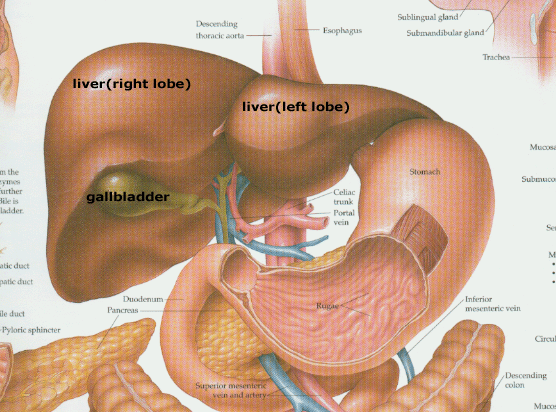Liver Screenings
THE LIVER is the main metabolic organ of the body. It metabolizes what we eat, and processes protein, fat, and carbohydrates. A liver cyst may be due to a parasitic disease.
If a mass on the liver is detected, investigation is required to determine if it is cancerous.
The liver is a soft, reddish, wedge-shaped gland that is located predominantly on the right side of the body, beneath the rib cage. In adults, it normally measures approximately 10 x 15 x 20 cm at its greatest dimensions.
The liver is responsible for regulating so many bodily functions that it has been referred to as “the custodian of the interior milieu.” Because of the wide range of bodily processes that occur in the liver, disruption of liver function has far-reaching consequences. Some of the essential functions of the liver include:
1. The production of bile which is stored in the gall bladder and used to digest fats. If the excretion of bile is blocked, the stools become pale and retain fat. As a result, fat-soluble vitamins (vitamins A,D, E and K) are not properly absorbed. In addition, levels of bilirubin, the main component of bile, rises in the blood. Once bilirubin levels reach 2.5 mg/dL, jaundice, or yellowing of the skin and eyes, occurs.
2. The synthesis of proteins, including albumin. Albumin is the predominant protein in blood plasma and helps to retain fluid within the blood vessels. The loss of albumin results in fluid shifting from the blood vessels to the surrounding tissue. The result is swelling of the tissue, a condition called “edema.”
3. The production of blood-clotting factors that control bleeding. Loss of clotting factors leads to increased chance of hemorrhage.
4. The metabolism of hormones and medications, such as estrogen and acetominophen (Tylenol). When the liver is damaged, its ability to metabolize hormones decreases. This can result in changes to estrogen and testosterone levels in the body. Symptoms of these changes include loss of pubic hair and the development of spider angiomas, small clusters of red blood vessels on the skin of the upper body, in both males and females. Men sometimes experience a decrease of testicular size and development of breast tissue (a condition called “gynecomastia”). A decline in the body’s ability to metabolize medications means that normal doses can turn into toxic levels. Therefore, doses of medicines are often reduced for people who have liver disease.
5. The regulation of glucose levels. Loss of liver cells leads to poorly controlled glucose levels. Glucose levels may soar after eating (hyperglcyemia) or fall dangerously low between meals (hypoglycemia). This poor regulation of blood sugar is due to a different mechanism than the mechanisms that lead to diabetes types I and II.
6. The conversion of ammonia, a by-product of metabolism, into a less toxic form called urea. Inability to convert ammonia to urea results in elevated ammonia levels in the blood. This can result in a condition called hepatic encephalopathy, which is a neurological syndrome characterized by alterations in mental status and behavior. Although acute episodes can be reversible, severe cases of hepatic encephalopathy can lead to coma and death.

